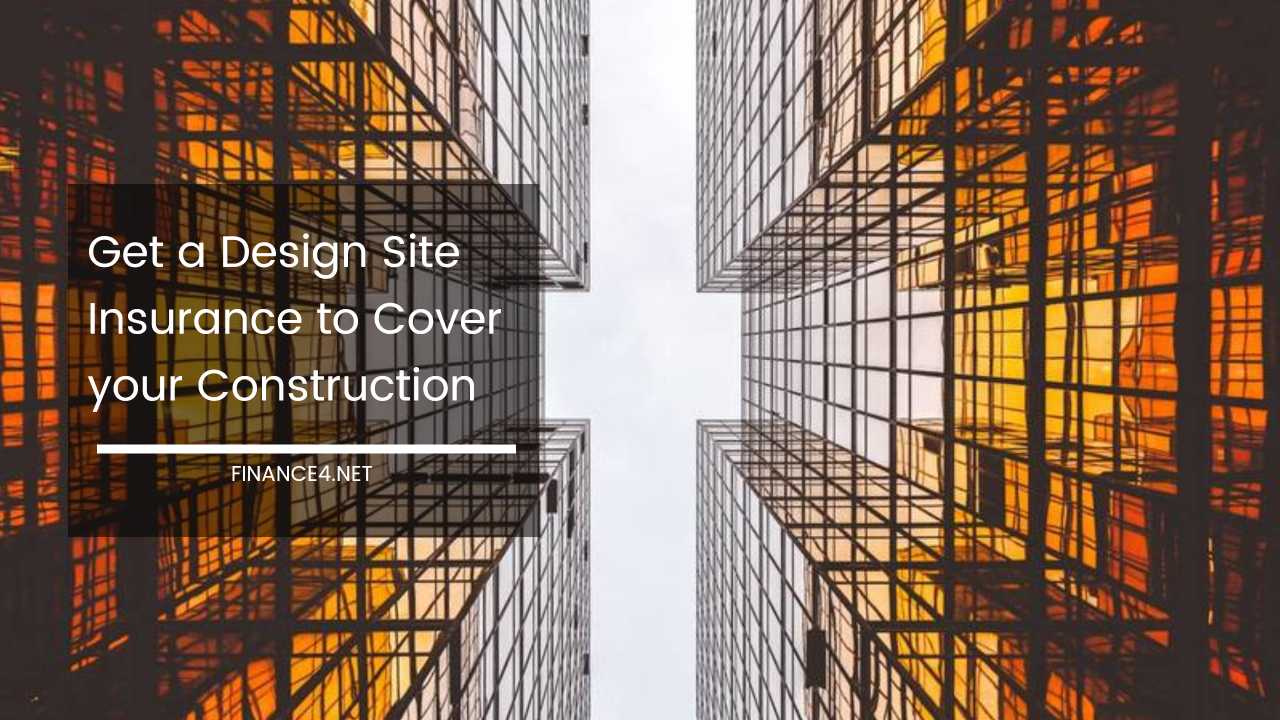Get a Design Site Insurance to Cover your Construction

Fortifying Your Construction Project: A Comprehensive Guide to Design and Site Insurance
The thrill of envisioning a brand new structure or the transformation of an existing space is undeniable. However, embarking on a construction project also signifies a significant financial investment.
While the potential rewards are substantial, safeguarding your resources from unforeseen circumstances is paramount.
This is where design and site insurance steps in, acting as a robust shield throughout the entire construction journey.
Beyond Standard Building Insurance: Why Design and Site Insurance is Essential
Traditional building insurance might seem adequate at first glance. However, its coverage typically kicks in only after the structure is completed.
Design and site insurance, on the other hand, provides a much broader spectrum of protection, encompassing the entire construction lifecycle. Here’s why opting for this comprehensive insurance is a wise decision:
-
Immediate Protection from the Start: The moment you acquire the land, your project becomes vulnerable to potential risks. Design and site insurance activates immediately, offering crucial public liability coverage. This means you’re financially protected if a third party, such as a neighbor or a passerby, sustains bodily injury or property damage due to your construction activities, even before the groundwork begins.
-
Flexibility for Unforeseen Delays: Construction timelines are notoriously unpredictable. The extended coverage period offered by design and site insurance (often 24 months) provides valuable peace of mind. This ensures your project remains covered even if it surpasses the typical 9-12 month timeframe, eliminating the hassle of potential gaps or renewal complications. This flexibility is particularly beneficial for intricate projects or those encountering unforeseen delays due to weather or material sourcing challenges.
-
Unwavering Coverage for Your Investment: Design and site insurance goes far beyond just protecting the completed structure. It encompasses a holistic range of project elements:
- Building Works: All aspects of the construction process, including materials, labor, and professional fees, are insured against various risks such as fire, theft, vandalism, and weather events. In the unfortunate event of a total loss, the policy provides the necessary funds to rebuild using professional services, ensuring your vision comes to life even after a setback.
- Temporary Works: Site infrastructure such as scaffolding, fencing, and temporary access roads are also covered, safeguarding your project against unforeseen damage. This ensures the safety and continuity of construction activities even in the event of an accident.
- Existing Structures: If your project involves modifying or demolishing existing structures, design and site insurance provides coverage during this crucial phase. This financial protection mitigates the risk of unexpected damage to the existing structure or surrounding properties.
-
Safeguarding Your Valued Possessions: Many construction projects involve the owner or workers residing on-site or nearby during the construction phase. Design and site insurance can extend coverage to your personal possessions, offering financial security in case of theft or damage. This eliminates the worry of personal losses impacting your project’s financial well-being.
-
Employer’s Liability: Protecting Your Workforce: Construction sites can be inherently hazardous environments. Design and site insurance includes employer’s liability coverage. This safeguards you from financial repercussions if a worker suffers a bodily injury, illness, or even emotional distress related to the project. This ensures you can focus on managing the project and supporting your team’s well-being without the worry of unexpected legal or financial burdens arising from workplace accidents.
Tailoring Coverage to Your Specific Needs
The beauty of design and site insurance lies in its customizability. By working with a qualified insurance broker, you can tailor the policy to encompass the specific needs of your project. Here are some key aspects to consider during the selection process:
- Project Complexity: The level of detail and potential risks associated with your project will influence the type and extent of coverage required. For instance, a straightforward renovation might necessitate a less comprehensive policy compared to a high-rise building project.
- Contractual Obligations: Many construction contracts stipulate mandatory insurance requirements for contractors and subcontractors. Carefully review your contract to ensure your chosen design and site insurance policy satisfies all stipulated coverage needs.
- Budgetary Constraints: Design and site insurance costs vary depending on the factors mentioned above. By comparing quotes from various reputable insurance providers, you can find a policy that offers optimal protection within your budgetary limitations. Don’t be afraid to negotiate with insurers to secure the best possible terms.
Investing in Peace of Mind
Construction projects are inherently complex, with numerous variables that can impact the timeline and budget. Design and site insurance acts as a powerful safety net, shielding you from unforeseen circumstances.
By offering comprehensive coverage for your project, workers, and even your personal belongings, it empowers you to focus on the successful completion of your vision. Don’t underestimate the value of peace of mind during this exciting yet demanding endeavor.
By securing the right design and site insurance, you can embark on your construction journey with confidence, knowing you’re well-equipped to handle whatever challenges may arise.
Beyond the Basics: Additional Considerations for Comprehensive Protection
While design and site insurance offers a robust foundation, there might be additional considerations depending on the specifics of your project. Here are some potential add-ons to explore:
- Advanced Loss of Profits Coverage: This coverage protects against financial losses incurred due to a delay in project completion caused by an insured event covered under the policy. This can be particularly valuable for projects with strict deadlines or those tied to revenue generation.
- Pollution Liability: If your project involves activities with a potential for environmental impact, such as asbestos removal or lead paint remediation, consider adding pollution liability coverage. This protects you from financial repercussions arising from accidental environmental damage during construction.
- Theft of Tools and Equipment: Construction sites are often targets for theft of tools and equipment. Including this coverage in your design and site insurance policy ensures financial reimbursement for stolen or damaged equipment, minimizing disruptions to your project’s progress.
- Legal Expenses Cover: Construction projects can sometimes lead to legal disputes. Adding legal expenses coverage to your design and site insurance policy can provide financial assistance for legal fees associated with such disputes.
The Importance of Proactive Risk Management
While insurance offers a safety net, proactive risk management is equally important for a successful construction project. Here are some key strategies to consider:
- Meticulous Planning and Budgeting: Thorough planning and realistic budgeting can help identify and mitigate potential risks before they escalate. This includes factoring in buffer periods for potential delays and unforeseen circumstances.
- Qualified and Experienced Contractors: Partnering with reputable and experienced contractors with a proven safety record significantly reduces the likelihood of accidents and costly delays.
- Regular Site Inspections: Conducting regular site inspections allows you to identify and address potential safety hazards or code violations promptly, minimizing the risk of accidents and project delays.
- Clear Communication and Documentation: Maintaining clear communication with all stakeholders involved in the project, including contractors, subcontractors, and regulatory bodies, is crucial. Detailed documentation of all agreements, plans, and inspections ensures a smooth workflow and minimizes the risk of misunderstandings or disputes.
Final Thoughts: Building a Secure Foundation for Your Project’s Success
By combining comprehensive design and site insurance with proactive risk management strategies, you can embark on your construction project with confidence.
This layered approach safeguards your financial investment, protects your workers, and empowers you to navigate unforeseen challenges with greater resilience.
Remember, a successful construction project is not just about the final product; it’s about the journey itself. By prioritizing safety, planning meticulously, and securing the right insurance coverage, you can ensure that your vision translates into reality, on time and within budget.



